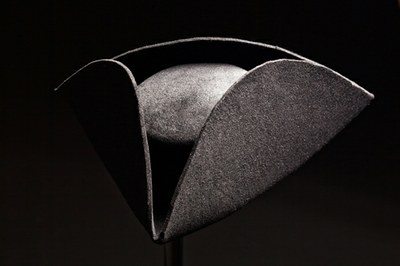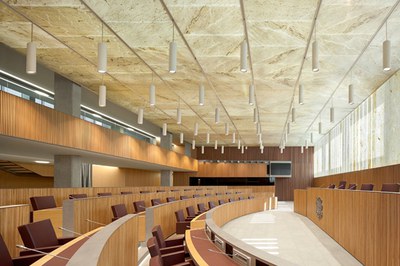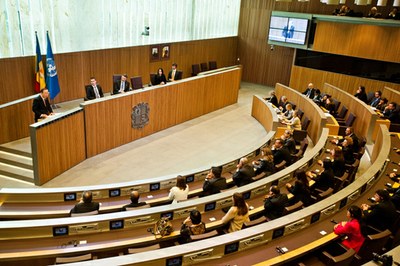Six centuries of The Consell General
Although in Andorra the meetings of the leading men from the villages were a remote tradition, it was in 1419 that the Consell General was created, also known at that time as the Consell de la Terra (Council of Earth) when representatives from the parishes met together to deal with matters affecting the valleys as a whole and their relationships.
Un sistema polític únic
Since then the institution has gone through many developments in its functioning and since 1993 it has been a parliament within a constitutional state which is defined as a political regime of unique characteristics, the parliamentary co-principality: with the Head of State in the form of two co-princes, the President of the French Republic and the Bishop of Urgell. The Consell General is the legislative power; the Government is the executive arm; and the judiciary is totally independent, with the Council of Justice as its governing organ, together with the Constitutional Court.
The first written history of Andorra
In 1748, an Andorran lawyer, Antoni Fiter i Rossell, delivered a manuscript volume to the Consell General. This was the Manual Digest, the first compilation of Andorran history, which had been commissioned by the Consell General itself. It refers to the reasons for the two sovereigns, the French and the Episcopal, and the customs and practices of the institutions. Some years later, in 1763, Antoni Puig, a priest, rewrote this work in another document, which is entitled Politar.
Speakers and members
 |
|---|
| The Councillors’ traditional three-cornered hat |
At that time, only the leading men had the right to form part of the Consell General. Little by little, in a process which continued until 1973, political rights were extended to all national citizens. From the very beginning, in the 15th century and even earlier, the representatives of the people could count on the síndic or procurator, who was elected to implement the resolutions taken.
The term síndic general was preserved with the parliamentary regime and is used for the speaker of parliament. As deputy speaker there is the subsíndic general. The administration of the institution is approved by a body known as the Sindicatura, formed of the speaker and deputy speaker and two secretaries who are members of parliament.
The Consell General, today
At present there are 28 members of parliament, organised in parliamentary groups whose presidents form the Board of Presidents. The regulation, which is of the rank of law, stipulates the existence of eight permanent legislative committees. Members of parliament also take part in international parliamentary assemblies, such as the Council of Europe, the Organisation for Security and Co-operation in Europe (OSCE-PA), the Inter Parliamentary Union and the Francophone Parliamentary Assembly.
Des de 1993. L’inici d’una nova etapa
When the 1993 Constitution was drawn up it was provided that the members of parliament could be 28 or 42. The Casa de la Vall building, a monument of the country, was no longer suited to further enlargement. For this reason and for the new parliamentary requirements, not to mention technological needs, the decision was taken to construct a new building which could accommodate the 42 parliamentarians envisaged in the text and all the activities required by the new juridical arrangements.
 |
|---|
| The Chamber in the new building |
 |
|---|
| Speech by the UN General Secretary, Ban Ki-moon, 2 March 2013 |


